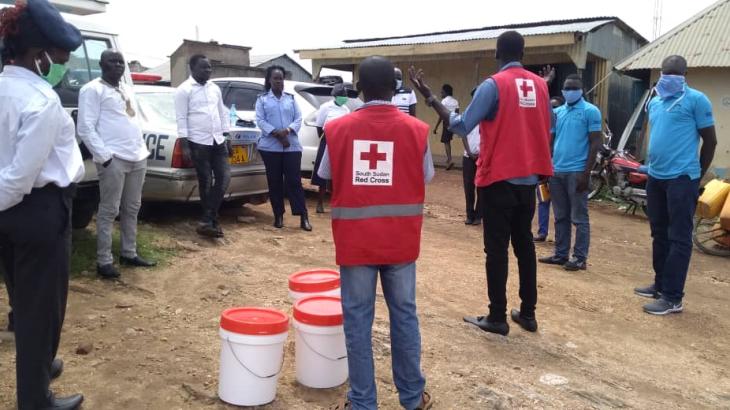South Sudan Red Cross
Dates of implementation: 2021 - present
Settings: Primarily rural/ IDP Camps
Context: Preparedness
Data collection system: Nyss platform
Partners: Norwegian Red Cross
The humanitarian needs of the population in South Sudan are vast and complex. Long-term armed conflict, natural disasters, related displacements and food insecurity, economic issues, have left about 9 million people in need for humanitarian assistance in 2024 (UN OCHA) and results in some of the worst health indicators globally (WHO 2014). The already very basic health care system is extremely weak, with severe shortages of health workers and functional facilities. Inadequate access to and utilization of health care services accounts for about 56 per cent of the whole population. About 75 per cent of all child deaths in South Sudan are due to preventable diseases, such as diarrhoea, malaria, and pneumonia. Vaccination coverage is low, with only 43 per cent coverage of one of the most critical vaccinations for children under 1 year, PENTA 3 (diphtheria, pertussis, tetanus, hepatitis B and haemophilus influenza) (ReliefWeb 2019). Natural disasters, like flooding, are occurring regularly meeting already weak water and sanitation infrastructure.
Those reasons contribute to South Sudan being highly prone to epidemic diseases which are major public health risks. The country has experienced many disease outbreaks like Cholera, measles, polio, yellow fever etc., and is at risk for further epidemics due to cross-border movements which facilitates the spread of epidemic diseases (e.g., haemorrhagic fever) (WHO 2020).
In response to these pressing challenges, the South Sudan Red Cross Society (SSRCS), in collaboration with the Norwegian Red Cross, launched Community Health Programme in 2021, encompassing Community-Based Surveillance (CBS), targeting conflict-affected States like Unity and Jonglei. This program incorporates an early warning system utilizing the Nyss platform, seamlessly integrated into existing surveillance frameworks established by health authorities. It constitutes a vital component of broader efforts aimed at curbing community transmission of diseases across the catchment areas.
SSRCS remains committed to expanding CBS initiatives into additional counties and States, thereby strengthening the health system to detect, prevent, and respond to health emergencies effectively. Ongoing efforts are supported by the Netherlands Red Cross under the umbrella of the ECHO Programmatic Partnership.
- Acute watery diarrhoea
- Fever and rash
- Fever with yellow eyes
- Acute flaccid paralysis
- Cluster of unusual illnesses or deaths in people
- Cluster of unusual animal illnesses or death

